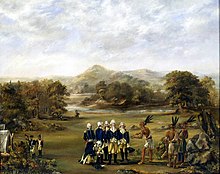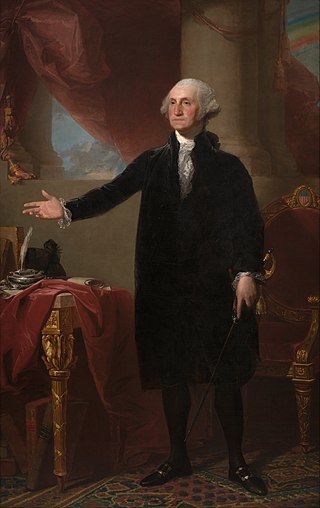| |||||
| Decades: | |||||
|---|---|---|---|---|---|
| See also: | |||||
| 1795 in the United States |
| 1795 in U.S. states |
|---|
| States |
| Washington, D.C. |
| List of years in the United States |
Events from the year 1795 in the United States.
| |||||
| Decades: | |||||
|---|---|---|---|---|---|
| See also: | |||||
| 1795 in the United States |
| 1795 in U.S. states |
|---|
| States |
| Washington, D.C. |
| List of years in the United States |
Events from the year 1795 in the United States.



The Treaty of Amity, Commerce, and Navigation, Between His Britannic Majesty and the United States of America, commonly known as the Jay Treaty, and also as Jay's Treaty, was a 1794 treaty between the United States and Great Britain that averted war, resolved issues remaining since the Treaty of Paris of 1783, and facilitated ten years of peaceful trade between the United States and Britain in the midst of the French Revolutionary Wars, which began in 1792. The Treaty was designed by Alexander Hamilton and supported by President George Washington. It angered France and bitterly divided Americans. It inflamed the new growth of two opposing parties in every state, the pro-Treaty Federalists and the anti-Treaty Jeffersonian Republicans.

This section of the timeline of United States history concerns events from 1790 to 1819.
Colonel Stevens Thomson Mason was an American lawyer, military officer and planter who served in the Continental Army during the Revolutionary War. Mason was also a delegate in the Virginia General Assembly and a Republican U.S. Senator from 1794 to 1803.
William Johnston Dawson was a U.S. Congressman from the state of North Carolina from 1793 to 1795 and a member of the North Carolina House of Commons.

The Lansdowne portrait is an iconic life-size portrait of George Washington painted by Gilbert Stuart in 1796. It depicts the 64-year-old president of the United States during his final year in office. The portrait was a gift to former British Prime Minister William Petty, 1st Marquess of Lansdowne, and spent more than 170 years in England.

The 4th United States Congress was a meeting of the legislative branch of the United States federal government, consisting of the United States Senate and the United States House of Representatives. It met at Congress Hall in Philadelphia, Pennsylvania, from March 4, 1795, to March 4, 1797, during the last two years of George Washington's presidency. The apportionment of seats in the House of Representatives was based on the 1790 United States census. The Senate had a Federalist majority, and the House had a Democratic-Republican majority.
Events from the year 1791 in the United States.
Events from the year 1792 in the United States.
Events from the year 1793 in the United States.
Events from the year 1794 in the United States.
Events from the year 1796 in the United States.
Events from the year 1797 in the United States.
Events from the year 1798 in the United States.
Events from the year 1799 in the United States.
Events from the year 1806 in the United States.
Events from the year 1807 in the United States.
Events from the year 1808 in the United States.
Events from the year 1809 in the United States.
Events from the year 1810 in the United States.
Events from the year 1813 in the United States.